

The magazine of the photo-essay

August 2018 back issue


“A free, really high quality photo-essay magazine. Fabulous!”
Stephen Fry. British actor, writer and film maker
by Catherine Karnow
When I first visited Hanoi in 1990, the city was deserted and quiet. The country was slowly recovering from the worst
years of poverty and austerity following the end of the Vietnam War in 1975. There were no privately owned businesses
and I remember very few restaurants. I do remember there was one woman who set up a little “phở ” stand near the
famous Hanoi Hilton prison. She made the hot noodle soup from a small stove and charcoal she carried on a bamboo
pole. Every morning she was there from about 6 to 10, at which point she packed everything up and trotted off with her
entire restaurant balanced on a bamboo pole. The soup was delicious, the best “phở gà” or Vietnamese chicken noodle
soup I ever ate those early days in Vietnam. I came back a couple years later and she was gone. Now you rarely see these
types of soup vendors anymore. In fact, over the last twenty-six years, I have watched Hanoi grow from a grim, hushed
town into a frenzied city, where it is hard to escape the relentless roar of motorcycles, and where crossing the street is a
daring act of faith that you’ll get to the other side unharmed. Yet, despite tall gleaming buildings, suburban enclaves,
shopping malls and an indoor ice skating rink, much of Hanoi still retains the old-world charm of a timeless Asia.
Everything happens on the street. Everywhere you look, people seem to be cooking or eating right on the sidewalk, at the
small tables and tiny stools so characteristic of Vietnam. Noodle soup, sticky rice, barbecued pork, dried fruit snacks, fresh
pineapple; Hanoi has come a very long way from those years of starvation and deprivation. Indeed food is central to the
Vietnamese way of life. The Vietnamese are “grazers.” They eat small meals, and snack often: a mid morning phở, or a
bánh mì sandwich after work.
The oldest and most vibrant neighborhood in Hanoi is known as the "36 Old Streets". Each street has a name like "Paper
Street" or "Silk Street" and is lined with shop after shop selling only that item. Arguably, the best street food is in the Old
Quarter. On a recent visit I discovered two legendary phở places, one for a chicken noodle soup, the other for beef, both
places beloved to Hanoians and packed every morning with their regular clientele. People don’t seem to mind the roar of
the traffic just inches away from the tiny tables and chairs where you sit. There is a lot of discussion about the origins of
phở. Was it from the French, the word phở coming from “pot au feu”? Charring the onions before adding them to the broth
is French, for example. No matter what, the Vietnamese are passionate about their phở, and blogs galore discuss the
various ways to achieve that perfect balance of texture and taste. Perhaps the most fascinating trend that I noticed on my
last trip to Vietnam in 2016 was a tendency towards not only vegetarian, but vegan restaurants. It is hard to overestimate
how hugely progressive this is, and speaks volumes on how fast the country changes. Thirty years ago, people were
starving in Hanoi, eating rats. Ten years ago, meat was something special, and only those who could afford to, ate meat.
Traditionally, observing Buddhist tradition, people abstained from eating meat only on the significant days of the lunar
calendar. Now, however, the Vietnamese are increasingly aware of issues of both food safety and their own health. People
are not burning the type of energy they used to, riding motorcycles to office jobs, where they are sitting all day. A rising
middle class eating vegan food in a stylish modern restaurant: this is definitely the New Vietnam.



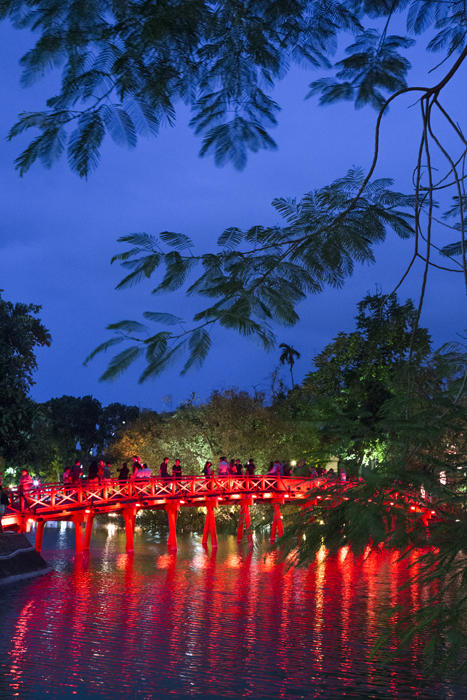
Hanoi's icon is the Red Bridge, or Cầu Thê Húc, on Hồ Hoàn Kiếm, or Hoan Kiem
Lake. Evenings bring Hanoians out to the lake to cool off after a hot day.
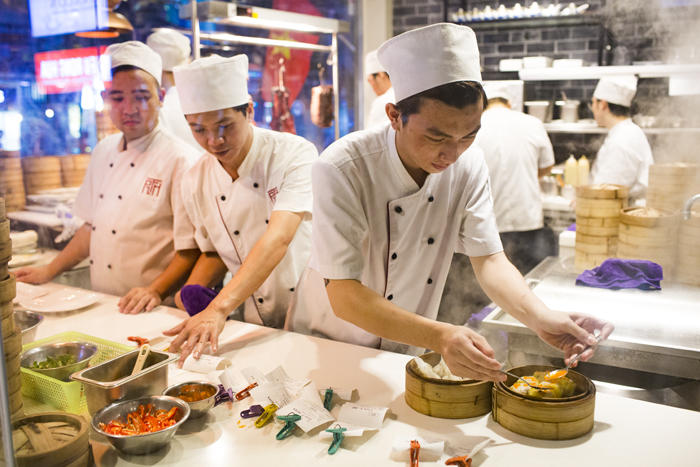
At the brand new Chinese restaurant, Fu Rong Hua, in Hanoi's Old Quarter, cooks prepare various dumplings and dim
sum.
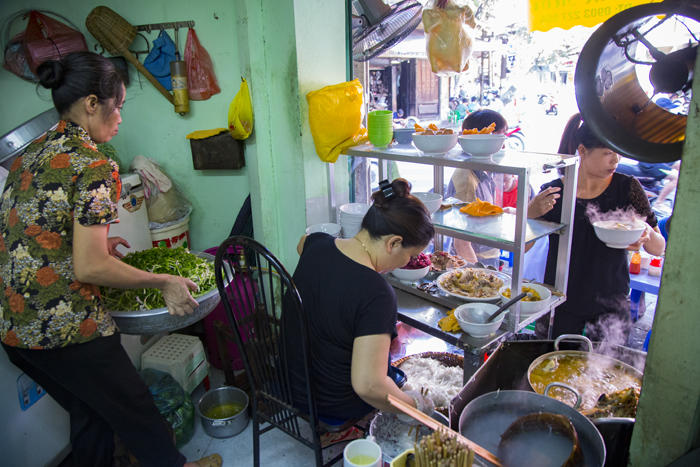
Family-run Phở Gà Đặc Biệt in Hanoi’s Old Quarter is one
of Hanoi’s best and most popular spots for phở gà or chicken
noodle soup. Most people come here for breakfast;
they sell a couple hundred bowls every morning.
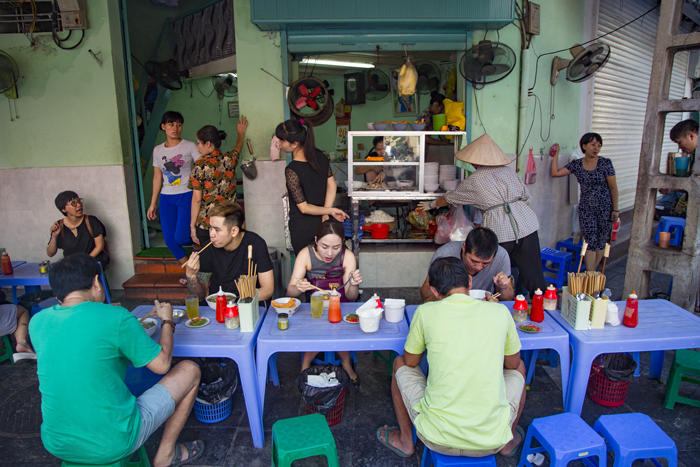
Every morning finds patrons crowding Hanoi's beloved Phở Gà Đặc Biệt, considered to have the best chicken noodle
soup in Hanoi. Hanoians are very proud of their phở, believing the only real phở is from the north, entirely dismissing
phở from the Central or South. Phở from Hanoi has the character of the typical Hanoian: elegant, refined, and a bit
austere.
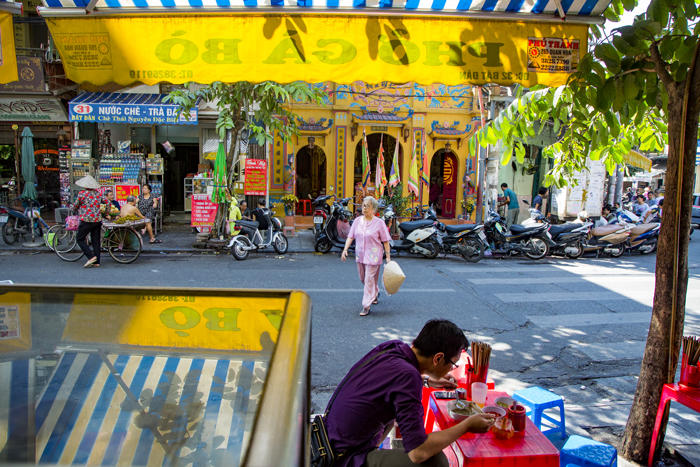
In Hanoi's Old Quarter, a man enjoys a beef noodle soup at a neighborhood noodle soup restaurant.
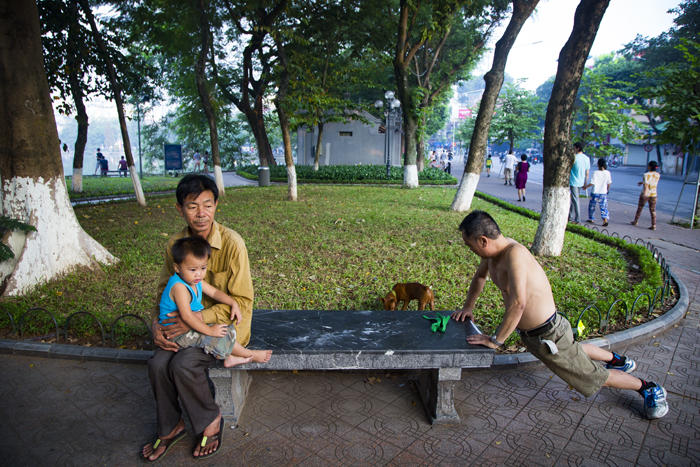
Health and fitness are part of the Vietnamese regime. Around Hồ Hoàn Kiếm, or Hoan Kiem Lake, you'll see everything
from ballroom dancing to men working out on benches and steps.
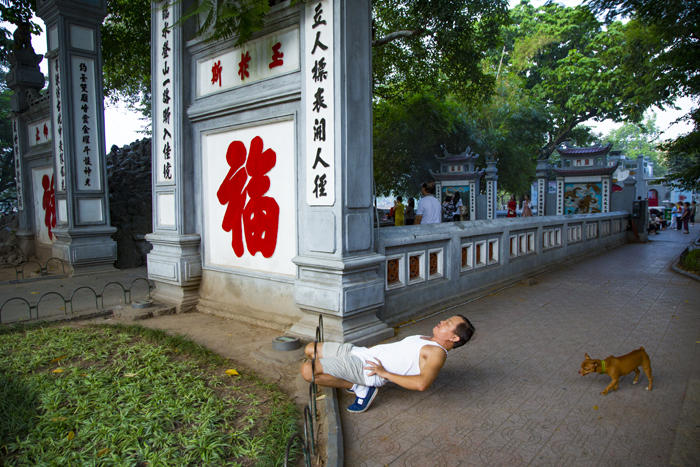
The Vietnamese have always been known for their resilience of spirit, symbolised by their diligent work-outs each morning.
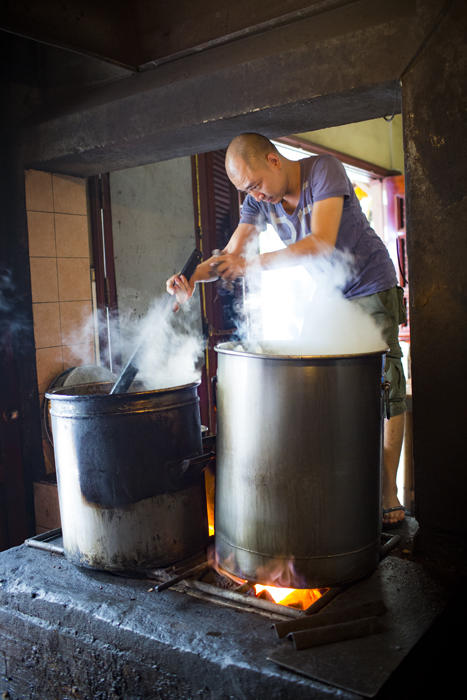
At Phở Gia Truyền Bát Đàn, Hanoi’s most beloved beef noodle shop, soup is
made the traditional way, boiling beef bones for hours over charcoal stoves.
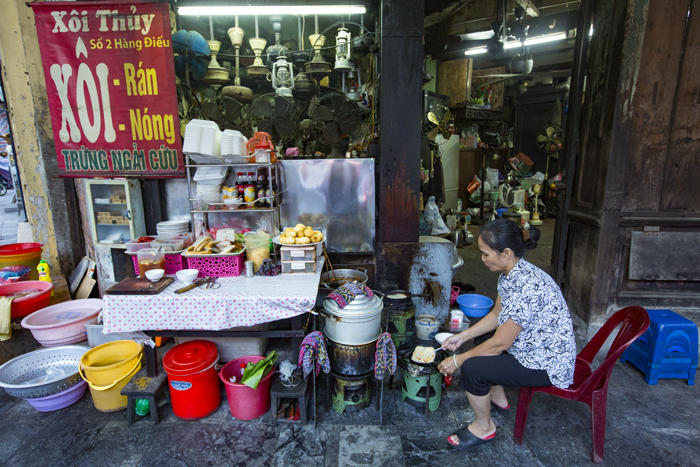
In the Old Quarter of Hanoi, people may open a family restaurant for a couple hours each day. This fan repair shop sells
Xôi, a Vietnamese dish made from glutinous rice and other ingredients.
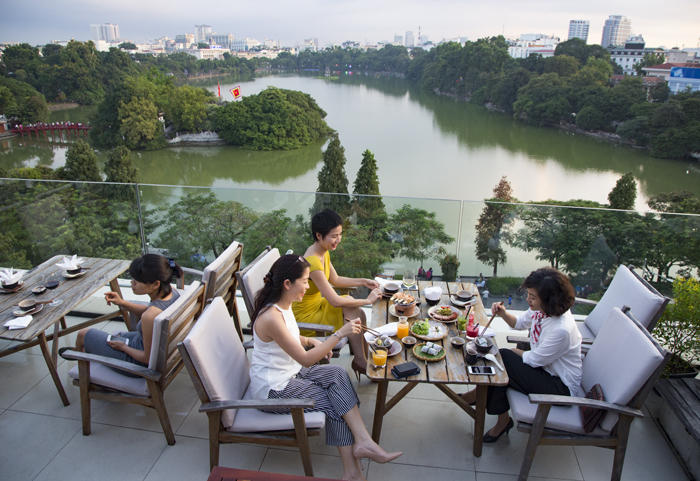
Cau Go, which means wooden bridge, boasts a spectacular view over Hanoi’s iconic Hoàn Kiếm lake. Hanoians gather for
a drink and dinner after work.
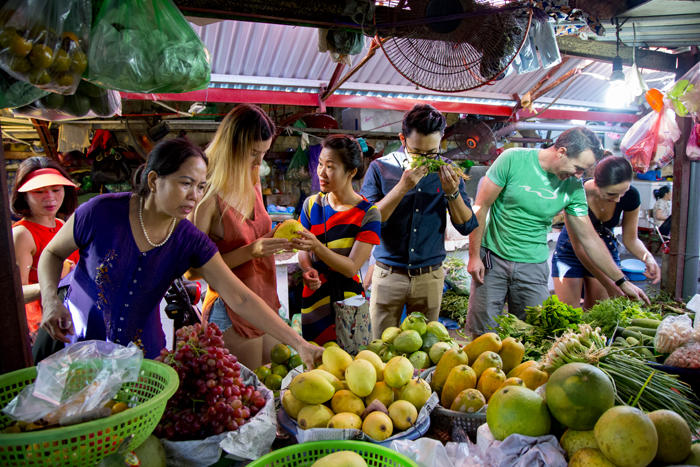
Previously the type of business only a foreigner would think to do, the young Vietnamese spirit of
entrepreneurship has
locals thinking of experiences like Food Tours for Vietnamese and foreigners alike, such as Thanhy’s Street Food
Experience.
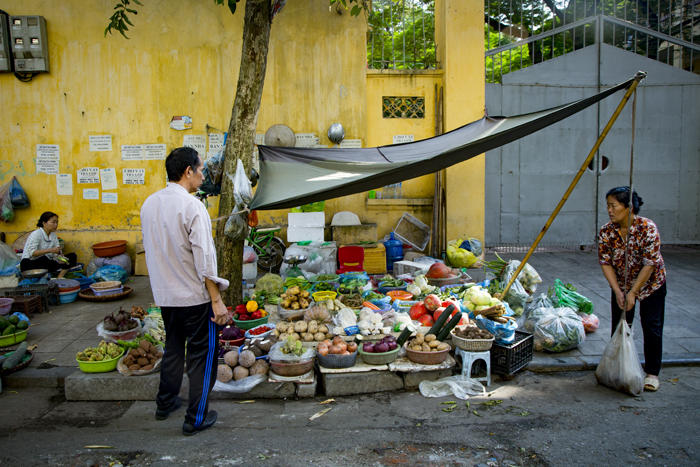
Under the more serious years of Communism, it was forbidden for people to run individual businesses. Across from
Hanoi’s central Đồng Xuân Market, a makeshift simple family stall is set up to sell a small amount of produce.
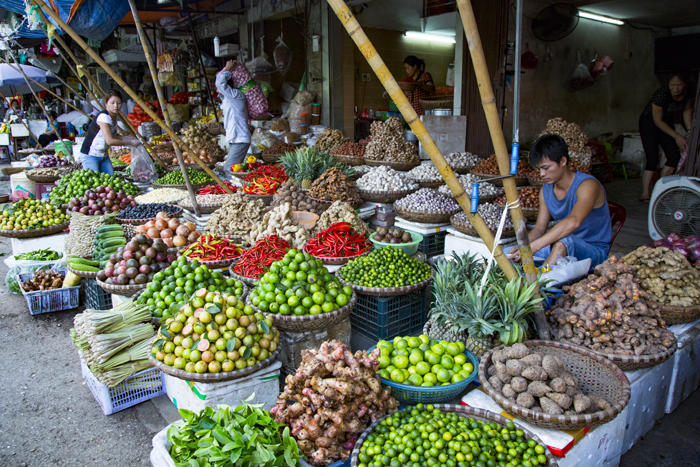
At Hanoi’s central Đồng Xuân Market, an abundance of produce showcases key ingredients of Vietnamese cuisine, which
represent the five elements found in nature: spicy, metal, salty, sour and sweet.
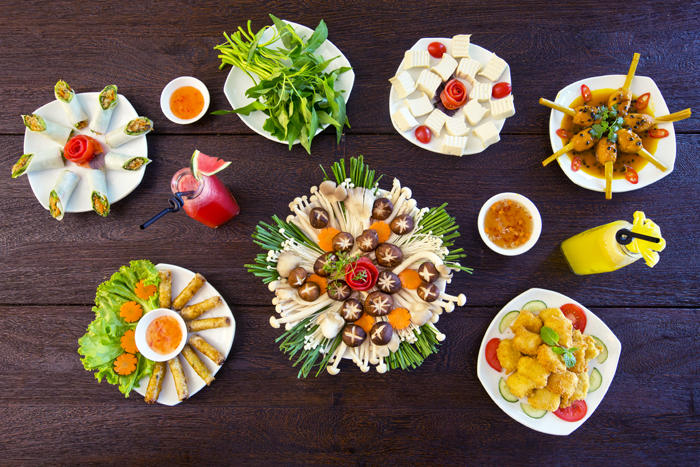
Because of concerns over food safety and a new awareness of health and diet, new vegan restaurants such as Cơm Chay
Sala Quán are becoming popular.
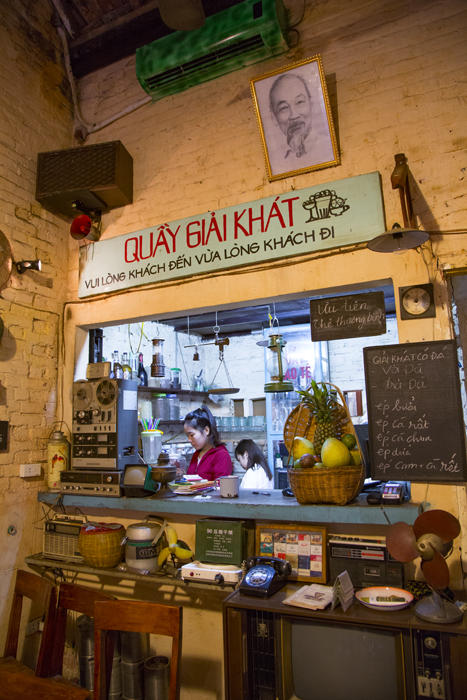
Vietnamese are a nostalgic people. Communist themed restaurants, such as Cửa
Hàng Ăn Uống Mậu Dịch, near Truc Bach lake, with its vintage decor and old
items, are onsidered amusing.
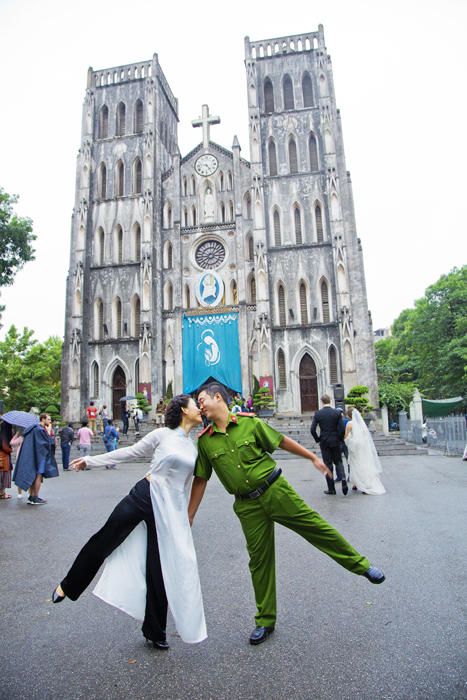
In the heart of Hanoi’s Old Quarter, a policeman and his bride pose for wedding
pictures in front of the famous St. Joseph’s Cathedral. It is a subtle sign of
brand new Vietnam to see a uniformed guard acting in a playful fashion.








